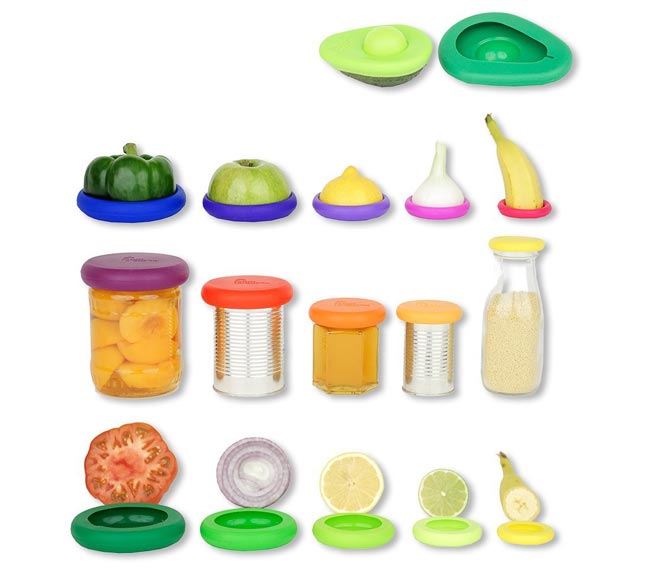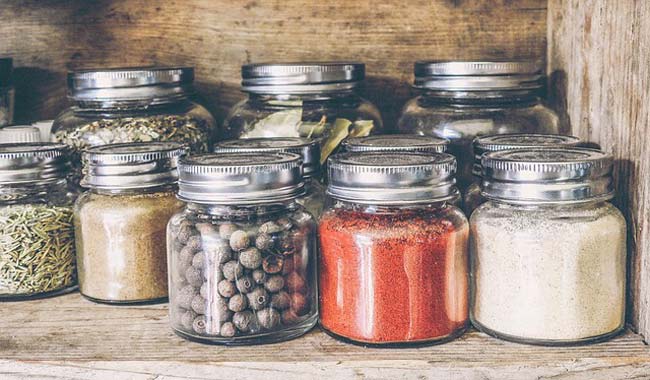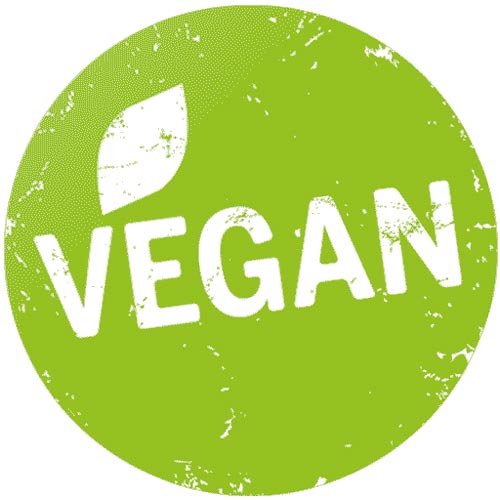We are all becoming more aware of ways to be eco-friendly. And one of the biggest ways to make an impact on the health of the planet is to reduce the use of plastic.
Single-use plastics are the biggest problem, and plastic wrap (clingfilm) is a huge culprit.
Rivers, oceans and beaches all over the world have become polluted with plastic litter. So much so that scientists have even found microplastics in ice in the Arctic (1).
Even though we are more conscious of this problem due to media coverage, the production of plastic is not slowing down.
The 320 million tons of plastic that were produced in 2016 is expected to double by 2034. Furthermore, it is estimated that a whopping 8 million pieces enter the oceans daily.

Why Plastic Is so Harmful for the Environment
Before we get into plastic wrap alternatives, let's just remind ourselves of why plastic is so harmful.
The majority of the plastic that pollutes the environment doesn’t break down.
Plastic bottles can last for 450 years and eventually turn into smaller pieces.
Plastic particles eventually sink to the ocean floor ,where it is invisible yet still damaging to aquatic life.
Macro and microplastic can be found floating everywhere in the ocean, and it is estimated there are 5.25 trillion pieces weighing approximately 269,000 tons.
Therefore the majority of marine debris is comprised of plastics, and this results in the deaths of over a million animals each year (2).
Even plastic that claims to break down is misleading.
A recent study found a lack of clear evidence that biodegradable, oxo-biodegradable and compostable materials offered an environmental advantage over conventional plastics (3).
How Plastic Gets into the Food Chain
The level of plastic pollution is so great that it is now present in the food chain, particularly in seafood. 1 in 3 fish that are caught and eaten contains plastic.
Researchers found the accumulated plastic could damage the immune system and upset a gut's balance (4).
Plastic absorbs industrial chemicals like PCB’s (polychlorinated biphenyl) and insecticides like DDT (Dichlorodiphenyltrichloroethane), which have been linked to endocrine disruption and even some cancers (5).
It isn't just humans that are being harmed. Some types of plastic bag resemble jellyfish and are eaten by turtles. Other aquatic predators that eat fish eggs sometimes mistake small plastic beads for food.
Pollutants and other chemical additives and metals can leach out of plastics after animals consume them. These then get into the tissues of different marine organisms and in turn affect the the creatures that feed on those organisms (5, 6).
15 Plastic Wrap Alternatives
With the above in mind, we should all be using less plastic, with a goal to only using non-toxic plastics that can definitely be safely recycled.
So why not start today by swapping out your kitchen plastic wrap for one of the following alternatives:
1. Cotton Bowl Covers

A variety of different covers are available and many have an elastic rim to easily stretch around a container. You can also find many bright and beautiful prints to add color to your kitchen.
Pros:
Some are made with laminated cotton for easy washing while remaining food-safe. Untreated cotton options are also available.
Cons:
You may need a variety of sizes to accommodate all your bowls and they are slightly bulky when it comes to storage.
2. Food Huggers

Usually made from silicone, you’ve probably seen these in the shape of the vegetable they are meant to store. They are ideal for times when you have half a tomato or onion and don’t want to take up room by storing it in a larger container.
Pros:
Ideal for half items because they fit perfectly and take up minimal room. They can also be used to cover small bowls, plates, or cups.
Cons:
They’re quite small and are designed for specific fruits or vegetables which are not always the same size. They can take up a lot of space when it comes to storage too.
3. Glass Jars

Glass jars have been around for decades and are enjoying a resurgence in popularity thanks to the zero waste movement.
They can be used for storing any kind of leftovers that don’t have a solid structure, making them perfect for vegetables, rice, sauces, pasta, and more.
Pros:
They are affordable, come in many sizes, and have matching lids. Glass will not leach any toxins into the food either.
Cons:
Glass can be heavy, especially if you are traveling with it. If you drop it, it will probably break and the glass shards will spoil any food stored inside.
4. Bowl on a Plate
This incredibly simple option is available to anyone with bowls and plates in their kitchen. Just cover the plate with an appropriately sized bowl and put it in the fridge or leave it on the counter.
Pros:
Everyone has these simple items, so they’re free and can be used anytime. In addition to bowls, you can use Tupperware, saucers, or cups to cover a plate as well.
Cons:
The seal is not airtight so it might cause the refrigerator to smell depending on what you store there. It’s also not a good option for traveling.
5. Reusable Cloth Bags

=> Shop here for reusable cloth bags
Food storage bags come in all shapes and sizes and are often made from durable, food-safe nylon. You can put fresh produce inside and store it in the fridge or toss your lunch in one and wrap it up to take on the go.
Pros:
Durable and long-lasting, you can also have them double as a placemat or napkin.
Cons:
Can be a little heavier than plastic and may need to be machine-washed.
6. Sandwich Wraps & Pockets

Grab a reusable wrap made from cotton or plastic that can be used over and over. Most of the materials used to make sandwich wraps are waterproof and machine washable.
Pros:
They can be used not only for sandwiches when packing lunch but also to store leftovers. Keeps food fresh and stops it drying out.
Cons:
Some contain PVC which has harmful phthalates. They don’t seal so are best for short-term storage.
=> Shop here for sandwich wraps
7. Reusable Freezer Bags
These bags are designed to be used multiple times and are made from durable plastic. They can be washed after every use and last a long time if cared for properly.
Make sure you buy BPA free freezer bags (7).
Pros:
They are easy to find in almost any store and can be used many times if they are properly cared for.
Cons:
Limited sizes are available and you will need something to secure the plastic in place if you choose to cut them up to cover dishes.
8. Food Storage Containers

You probably already have an eclectic collection of Tupperware, Pyrex, or glass containers in your cupboards at home. These are a classic food storage option that come with a lid so you don’t need to use plastic wrap.
Pros:
Pyrex is oven-proof, reheating leftovers is quite easy and you can take food anywhere. Most are safe enough to freeze so you can meal prep in advance.
Cons:
Plastic containers should be used for hot food and you may need a bunch of different sizes to hold different kinds of food. Some may not be big enough to mix things like salads.
9. Baking Trays, Pots, and Pans
Use the baking tray or casserole dish to store leftovers as they are. You can also combine the main dish and several sides in one dish to reduce containers.
Pros:
Once cooled, just put the lid on and put the tray, pot, or pan directly into the fridge. This is an easy option and prevents you from dirtying multiple dishes.
Cons:
Can be big and bulky or take up a lot of room in the fridge.
10. Silicone Lids
![]()
Silicone is great when it comes to food because it’s safe and can also be used in the dishwasher, microwave, and freezer. It can also be used on hot pans and will form a seal so you don’t have to worry about spills.
Pros:
Lasts longer than plastic, is BPA free, very durable and great for hot temperatures.
Cons:
Silicone is not recyclable, so you will have to use these lids until they wear out – by which time we should have invented a way to recycle them for some kind of energy.
=> Shop here for silicone lids
11. Bioplastics, Organic & Compostable Coverings
Recent innovations have resulted in a wide array of new materials that have recently come to market and can be used to replace plastic wrap.
From mycelium, which is made from mushrooms; to bagasse, a by-product of sugarcane processing; and biodegradable NatureFlex made using wood pulp; there are many eco-friendly options (8).
Pros:
Many are sustainable to produce or made from recyclable plastics.
Cons:
Because they are relatively new, they may be difficult to find or expensive until they become more mainstream.
12. Parchment Paper and/or Foil
This is an instant option for wrapping up leftovers that are sturdier and don’t need to be put into a container. You can easily freeze foods this way and using foil is said to help prevent freezer burn.
Pros:
You probably already have it in your kitchen and unbleached, compostable options are also available.
Cons:
Neither can be reused easily, although foil can be washed and reused before you recycle it.
13. Cups and Vases

When it comes to storing produce, you can extend the freshness by putting it into a cup or vase. Just fill it with a little water, put the vegetable inside and put it in the fridge. This works great for celery, herbs, asparagus, and scallions.
Pros:
Quick and easy and prolongs the life of your produce.
Cons:
Could tip over in the fridge and break.
14. Dish Towels

Dish towels are the original plastic wrap, used for many years to store dishes. They are versatile and can be used to cover a bowl or wrap up a loaf of bread.
Pros:
They can be washed and reused many times. You probably already own some so no need to run out and buy anything new.
Cons:
Towels won’t seal a container and liquids are not secure if the dish tips over.
15. Old Plastic Bags
It seems somewhat hypocritical to have this on a list that is trying to eliminate plastic, but we have to face the fact that we already have tons of plastic in circulation and limited resources to recycle it.
So we should be re-using what we can to discourage the production of new plastic to try and get on top of the problem .
Plastic bags are present in almost every area of our lives, and you can help reduce waste by reusing them to store foods or pack your lunch for work.
Pros:
Easy way to store sandwiches and snacks. Bread bags or frozen food bags can be washed out and reused as well.
Cons:
The plastic isn’t usually that durable so it will break down over time and will need to be thrown away – but hopefully recycled!
This option isn't ideal because low quality plastic may contain harmful toxins. So it is best to use these old bags to store food that is already wrapped in a safer alternative such as the others in this list.
Try This Next…
We have a really cool calculator that shows how eating a plant-based diet helps the environment.
From lowering C02 emissions to saving forest per square ft and animals, you can see exactly how your choices impact the planet.
=> Click Here to Use the Impact Calculator
——-
Got any suggestions for plastic wrap alternatives? Leave it in the comment section below.




Leave a Reply